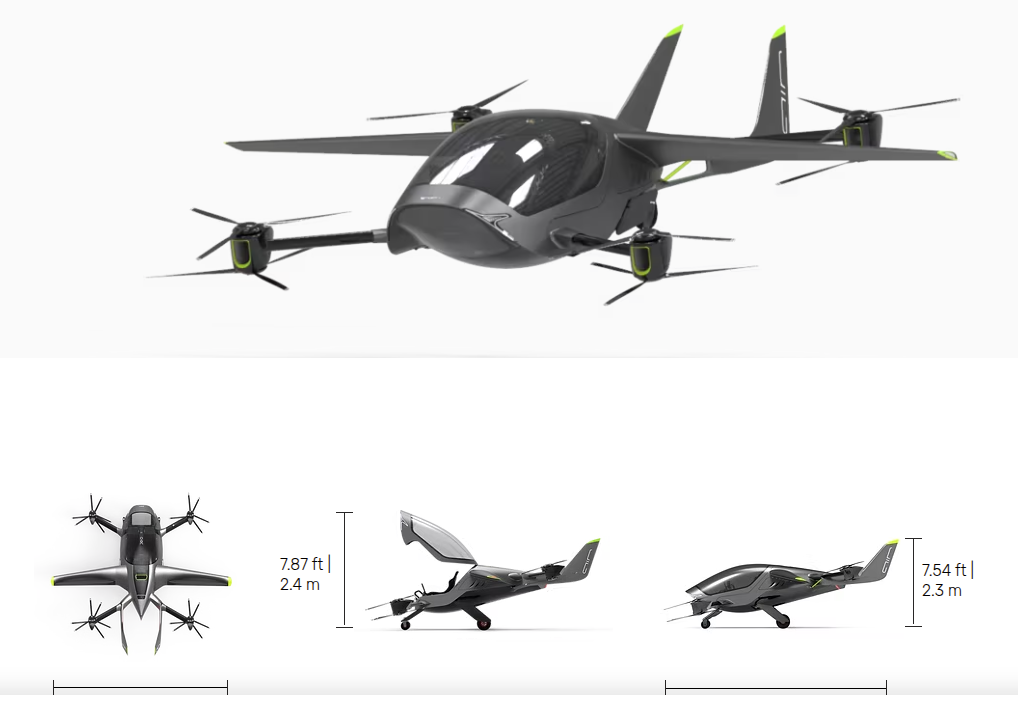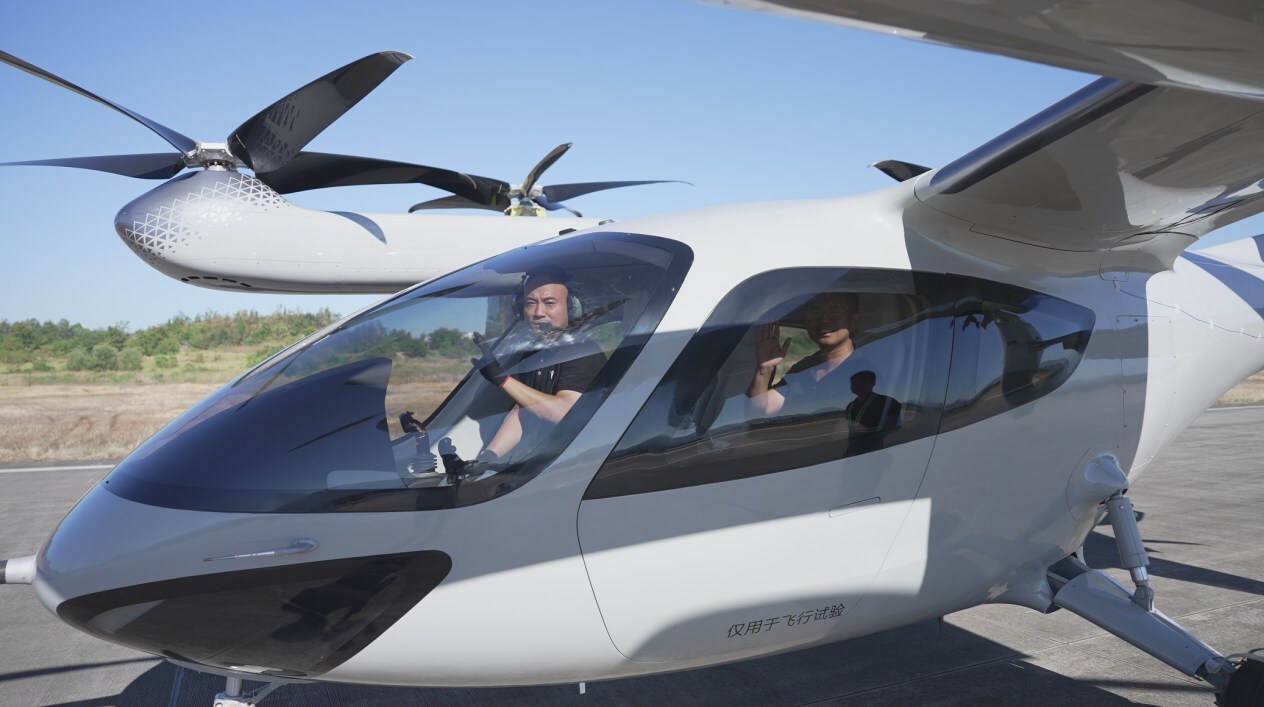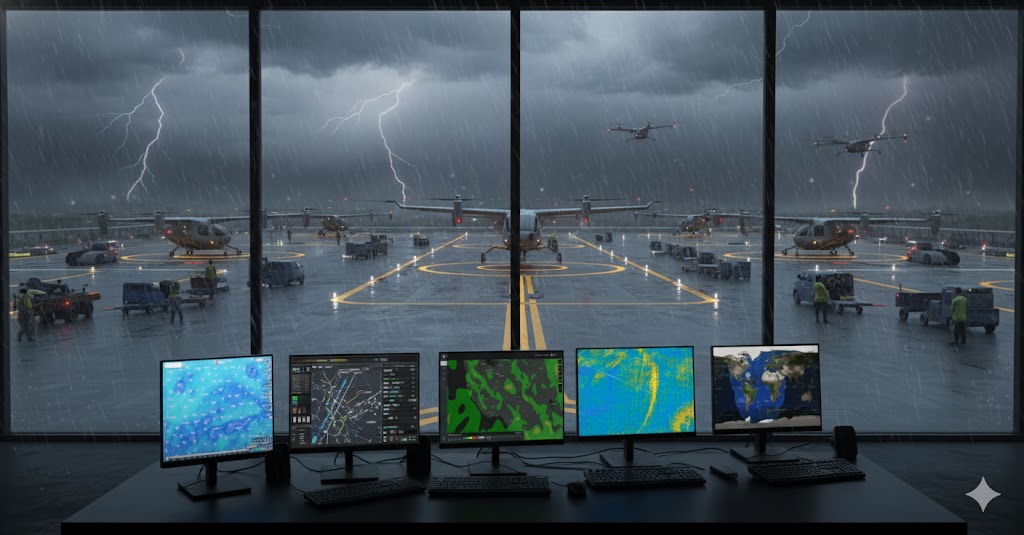The FAA has issued an Experimental Airworthiness Certification for AIR’s eVTOL prototype. The Israeli-American company now positions itself at the forefront of the emerging low-altitude economy, with immediate flight testing capabilities and a potential fast-track to market entry through Light Sport Aircraft certification. The timing aligns perfectly with government initiatives promoting domestic eVTOL production, suggesting coordinated industry development and regulatory support.
Immediate Impact of the Certification
AIR’s certification unlocks comprehensive flight testing capabilities that could prove decisive in the competitive race for market entry. The company can now validate critical performance metrics required for LSA certification under the updated FAA MOSAIC ruling. Unlike competitors pursuing full commercial-type certification under Part 21.17(b) regulations, AIR’s experimental pathway offers significantly faster market entry potential.
The potential for first-to-market LSA certification could establish AIR as the early leader in personal eVTOL ownership. Strategic timing of government eVTOL promotion initiatives provides regulatory tailwinds that larger competitors may not fully capitalize on.
AIR claims it could become the first eVTOL to receive LSA certification, which would represent a substantial competitive advantage in time-to-market considerations. This pathway sidesteps the extended timelines plaguing commercial air taxi operations, where full type certification is unlikely to occur before 2027.
Air One: Technical Specifications and Design Philosophy
The Air One demonstrates AIR’s pragmatic approach to electric aircraft design. Performance metrics reveal a machine built for practical operation rather than headline-grabbing specifications. The aircraft has a 550-pound payload capacity and a flight duration of one hour, while maintaining cruise speeds of up to 155 mph. This performance envelope targets real-world urban air mobility applications rather than theoretical maximum capabilities.
The propulsion system features eight electric motors driving eight propellers in a distributed configuration. This design philosophy emphasizes simplicity, with only eight critical moving parts, thereby reducing the mechanical complexity that has plagued other eVTOL designs. The aircraft’s high main wing configuration and fixed propeller system eliminate the weight and complexity of tilting mechanisms that competitors employ.
AIR’s dual configuration strategy sets the company apart from competitors focused solely on passenger transport. The piloted two-seater targets the personal transportation market, while the uncrewed cargo variant addresses commercial delivery operations. This flexibility provides multiple revenue streams and reduces market entry risks by diversifying operational applications.
The aircraft incorporates AIR’s “fly by intent” system, currently utilized in the company’s drone operations. This technology allows pilots with minimal experience to operate the Air One safely, potentially expanding the addressable market beyond licensed pilots. Safety features include distributed electric propulsion for redundancy and a whole-aircraft emergency ballistic parachute system.
Physical dimensions accommodate practical considerations often overlooked by competitors. The wings fold toward the vehicle body, allowing the aircraft to fit in standard car parking spaces when configured for ground storage. At 19.2 feet long, 24.6 feet wide, and 7.54 feet tall, the Air One represents a reasonable compromise between performance and practicality.

| Performance Metric | Specification |
| Passenger Capacity | 1 pilot + 1 passenger |
| Payload Capacity | 550 pounds |
| Flight Duration | Up to 1 hour |
| Cruise Speed | 155 mph |
| Range | 110 miles |
| Propulsion System | 8 electric motors, 8 propellers |
| Critical Moving Parts | 8 components only |
Competitive Analysis
The competitive environment within the two-passenger LAE aircraft category reveals three distinct design philosophies, each pursuing vastly different operational approaches. The reference aircraft faces direct competition from established players who have already made significant market commitments, yet each competitor carries fundamental limitations that create clear market opportunities.
Volocopter's 2X represents the cautious engineering approach to urban air mobility. With eighteen electric motors driving eighteen propellers, the aircraft achieves remarkable safety through redundancy, but this comes at a steep performance cost. The 2X crawls through the air at just 63 mph with a meager 17-mile range, making it suitable only for the shortest urban hops. The 27-minute flight duration severely constrains operational flexibility, essentially limiting the aircraft to demonstration flights and carefully choreographed city center routes. Volocopter's multicopter configuration requires no runway, but the trade-off in speed and range makes it impractical for anything beyond highly localized transportation.
EHang's EH216-S takes an even more radical approach by eliminating the pilot entirely. The autonomous aircraft carries two passengers at similar crawling speeds of 62 mph over just 22 miles, with only 21 minutes of flight time. While EHang has achieved production status in 2025, the autonomous operation introduces regulatory complexities that may limit deployment opportunities. The aircraft essentially functions as a vertical taxi for very short trips, competing more with helicopters than traditional aircraft.
Pipistrel's Velis Electro offers the most conventional approach with a single electric motor driving one propeller. As the world's first type-certified electric aircraft since 2020, the Velis Electro has proven market viability. However, its performance numbers tell a story of modest ambitions: 101 mph cruise speed with just 50 minutes of endurance and a 380-pound payload capacity. The Slovenian manufacturer focused on training aircraft markets, where the limited performance envelope matches flight school requirements perfectly.
The reference aircraft's specifications reveal a fundamentally different market strategy. At 155 mph cruise speed and 110-mile range, it operates in performance territory that none of its direct capacity competitors can match. The one-hour flight duration provides genuine cross-country capability, while the 550-pound payload capacity exceeds both the Volocopter 2X and Pipistrel Velis Electro by substantial margins. The eight-motor, eight-propeller configuration strikes a middle ground between the Volocopter's excessive redundancy and Pipistrel's single-point-of-failure design.
This performance advantage suggests the reference aircraft targets applications where speed and range matter more than vertical takeoff capability. Training operations, personal transportation, and specialized missions that require covering meaningful distances become viable with these specifications. The fixed-wing configuration also eliminates the complex infrastructure requirements that limit eVTOL deployment, potentially accelerating market entry and reducing operational costs.
The competitive analysis reveals that existing two-passenger aircraft have largely conceded the performance segment to larger, more complex vehicles. By delivering conventional aircraft performance in an electric package, the reference aircraft could capture demand from operators who need more capability than current electric options provide, but don't require the passenger capacity or complexity of larger eVTOL aircraft.
| Aircraft | Capacity | Payload Capacity | Cruise Speed | Range | Flight Duration | Propulsion System | Aircraft Type | Development Status |
| Reference Aircraft (1 pilot + 1 passenger) | 1 pilot + 1 passenger | 550 pounds | 155 mph | 110 miles | Up to 1 hour | 8 electric motors, 8 propellers | Fixed-wing | Specifications provided |
| Volocopter 2X | 1 pilot + 1 passenger | 160 kg (350 lb) | 63 mph (102 km/h) | 17 miles (27 km) | 27 minutes | 18 electric motors, 18 propellers | eVTOL (multicopter) | Full-scale prototype |
| EHang EH216-S | 2 passengers (autonomous) | 220 kg (485 lb) | 62 mph (100 km/h) | 22 miles (35 km) | 21 minutes | 16 electric motors, 16 propellers | eVTOL (multicopter) | Production model (2025) |
| Pipistrel Velis Electro | 1 pilot + 1 passenger | 380 lb (172 kg) | 88 KTAS (163 km/h / 101 mph) | 50 minutes endurance | 50 minutes | 1 electric motor (57.6 kW) | Fixed-wing electric | Type-certified (2020) |
Regulatory Environment and Strategic Positioning
The broader regulatory environment suggests AIR’s timing may prove prescient. Recent industry analysis indicates that full type certification for eVTOL aircraft in the United States is unlikely to occur before 2027, with some experts predicting 2028-2030 as more realistic timelines. These delays stem from incomplete testing protocols and the FAA’s data-driven approach to establishing comprehensive safety standards.
AIR’s LSA pathway could circumvent these delays entirely. The MOSAIC ruling expanded LSA definitions to include specific eVTOL designs based on stall speed rather than weight limitations. Aircraft meeting essential performance criteria with stall speeds below 61 knots and maximum speeds below 250 knots can pursue LSA certification, which historically requires less stringent oversight than commercial-type certification.
This regulatory strategy positions AIR advantageously while competitors face extended certification timelines. The LSA pathway provides faster market entry potential, reduced regulatory oversight, and access to a broader pilot community already familiar with sport aircraft operations. The timing aligns with regulatory changes that specifically accommodate electric aircraft designs within existing frameworks.
The FAA’s recent guidance for powered-lift aircraft certification demonstrates regulatory evolution supporting eVTOL development. However, these guidelines primarily address commercial operations rather than personal aircraft, giving AIR’s LSA approach additional strategic value.
Market Position and Economic Impact in the Low-Altitude Economy
The broader low-altitude economy in the United States continues to expand rapidly, creating opportunities for diverse aircraft configurations and operational models. The current market status indicates that 92 cities and airports are now planning eVTOL operations, with urban air mobility projections reaching $23.5 billion by 2030 and $41.5 billion by 2035. These projections encompass commercial air taxi services that dominate competitor strategies.
AIR’s positioning within this expanding low-altitude economy offers unique advantages. The cargo variant’s operational readiness enables immediate revenue generation, while the passenger variants undergo certification. The company claims operational experience with nighttime beyond-visual-line-of-sight operations, demonstrating safety and reliability to regulators. This operational data could prove valuable for certification processes across both cargo and passenger configurations.
The company’s $150,000 price point targets owner-operators rather than commercial fleet operators, potentially tapping into general aviation markets that competitors ignore. This pricing strategy could democratize access to electric aircraft technology while building market acceptance for urban air mobility concepts.
Infrastructure development supports AIR’s market timing. Cities like New York, Los Angeles, and Miami invest heavily in supporting infrastructure, but the pace must accelerate to support projected operational volumes. AIR’s dual-market approach provides flexibility as infrastructure development progresses at varying rates across different regions.
Technical Challenges and Innovation Requirements
Battery technology remains the fundamental constraint across the entire electric aircraft industry. Current energy densities require approximately 50 percent improvement to enable longer routes without intermediate charging stations. AIR’s one-hour flight time represents competitive performance with current battery technology, but range limitations constrain operational flexibility compared to traditional aircraft.
The Air One’s 110-mile range positions it competitively within current technical limitations while providing meaningful utility for regional transportation. The aircraft’s efficient design maximizes range through lightweight construction and aerodynamic optimization, rather than relying on larger battery packs that would reduce payload capacity.
Noise profiles present another industry-wide consideration. While eVTOL aircraft generally operate more quietly than helicopters, public acceptance in urban environments requires continued improvement. Industry benchmarks around 45 dBA cruise noise represent substantial progress, but community concerns about privacy and visual impact persist.
Charging infrastructure development supports AIR’s market approach. The Air One accommodates home charging through installed adapters and public EV fast DC charging stations with standard CCS plugs. This compatibility with existing electric vehicle infrastructure reduces operational barriers for private owners compared to commercial operators, who typically require specialized charging facilities.
Conclusions
AIR’s certification achievement positions the company advantageously within a complex competitive landscape that rewards different approaches to market entry. While competitors pursue higher-performance designs with greater complexity, AIR’s simplified approach and dual-market strategy could enable faster market entry and operational learning.
The company’s strategic positioning between simple recreational aircraft and complex commercial air taxis could prove valuable as regulatory pathways develop and market preferences emerge. The timing of AIR’s Florida expansion benefits from the state’s supportive regulatory environment and growing aerospace infrastructure, creating opportunities for shared learning and industry development.
The company’s dual-market flexibility provides multiple pathways to profitability while the industry matures around sustainable aviation technologies.




